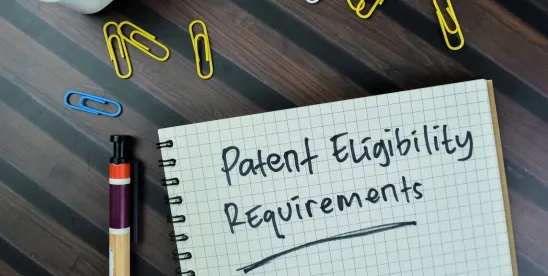On remand from the US Court of Appeals for the Federal Circuit in connection with inter partes review (IPR) proceedings, the Patent Trial & Appeal Board considered the petitioner’s reply arguments and evidence regarding the claim constructions that were first proposed in the patent owner’s response but again found that the claims were not unpatentable. Axonics, Inc. v. Medtronic, Inc., IPR2020-00712; -00680 (May 30, 2024) (Tartal, Jeschke, Dougal, APJ)
Axonics filed IPR petitions challenging two patents owned by Medtronic that are directed to the transcutaneous charging of implanted medical devices. In its petitions, Axonics did not propose any express claim constructions. In its preliminary response, Medtronic agreed that claim construction was not necessary. In its patent owner response, however, Medtronic – for the first time – advanced a new claim construction that differed from the interpretation of the relevant claims implied in Axonics’s claim charts. Axonics defended its own implicit construction but also offered new arguments and evidence that the prior art anticipated the patents even under the alternative construction. The Board adopted Medtronic’s new claim construction but refused to consider Axonics’s new arguments and evidence because they were first presented in the reply. The Board then found that Axonics failed to show by a preponderance of the evidence that the challenged claims were unpatentable. Axonics appealed.
Axonics did not dispute the new claim construction first introduced by Medtronic in its response and adopted by the Board; it argued only that the Board erred in refusing to consider its reply arguments and evidence under the new construction. The Federal Circuit agreed, concluding that in such a situation, “a petitioner must be given the opportunity in its reply to argue and present evidence of anticipation or obviousness under the new construction, at least where it relies on the same embodiments for each invalidity ground as were relied on in the petition.” The Court remanded for the Board to consider Axonics’s new arguments.
On remand, the Board considered Axonics’s new arguments and evidence that the challenged claims were unpatentable over the prior art under the new construction. It also considered Medtronic’s amended sur-reply. The Board again determined that none of the challenged claims were unpatentable. In its analysis, the Board pointed out that some of Axonics’s new arguments and evidence regarding what the prior art disclosed in light of the new claim construction were inconsistent with the arguments and evidence it initially offered in its petition. In particular, the Board observed that the declaration testimony of Axonics’s expert regarding the prior art, on which Axonics relied in its petition, did not support the new claim construction, even considering the expert’s supplemental declaration. The Board also rejected Axonics’s attempts in its post-remand brief to discredit Medtronic’s arguments as “untimely and wrong,” “incorrect” and “contradictory of the positions on infringement it has taken in district court.” Citing the Federal Circuit, the Board pointed out that in an IPR, the burden of persuasion to prove unpatentability by a preponderance of the evidence “never shifts to the patentee.”
Practice Note: If a patent owner first introduces a new claim construction in an IPR, the petitioner must be given the opportunity to present new arguments and evidence of anticipation or obviousness under the new construction. However, the petitioner’s new arguments are subject to Board consideration in light of the petitioner’s initial arguments and evidence and may be discounted if they are inconsistent with positions taken in the petition.



 />i
/>i

